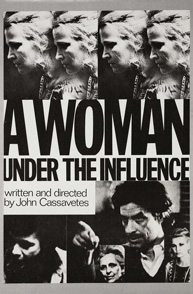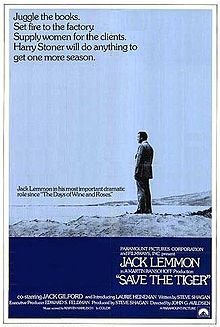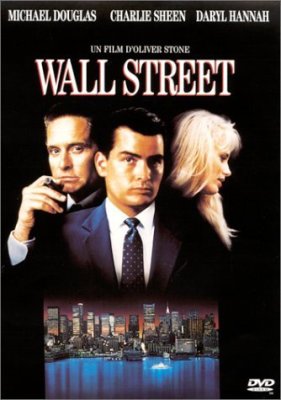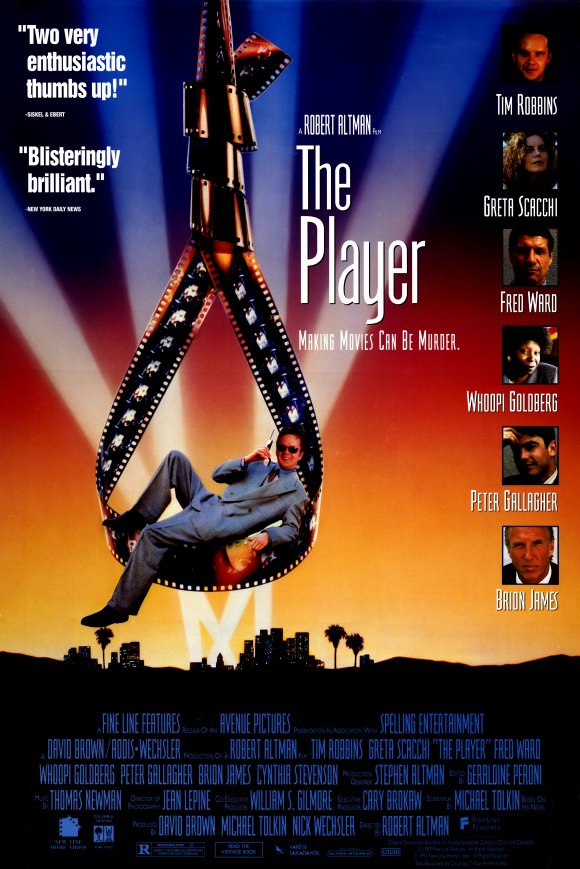‘A Woman Under the Influence’: Hard drinking, hard living, not necessarily in that order
Acceptance is accomplishment. It requires one of the greatest of sacrifices, hope. No film with such a message can end in joy, and for the filmmaker, that is generally another type of sacrifice. Not for John Cassavetes.
It is said in certain descriptions that “A Woman Under the Influence” involves a woman crossing the line into madness. Perhaps technically correct, that is not the drama here. “Influence” is about people’s realization that a beloved person is beyond medical help. This revelation is, and should be, very sad. But there are other emotions to contend with, none overlooked in this masterwork.
Movies introduce us to characters in a certain state and then transition them. Mabel Longhetti is the equivalent of Raymond Babbitt in “Rain Man,” wrongly confused by viewers as the protagonist. The transition occurs in all of the characters, notably her husband, Nick. This is Peter Falk’s film, possibly the greatest performance by a leading actor.
This was missed not only by Oscar voters but critics. Nora Sayre, in the New York Times, wrote that Cassevetes “perhaps unintentionally ... has made the man appear much crazier than his wife.”
Roger Ebert, at the time, wrote of Nick, “He’s as crazy as she is, maybe more so.”
That is not the case. Mabel is unable to care for children. Nick is able to handle engineering emergencies for the city of Los Angeles. He’s not crazy; he’s just, like so many Cassavetes characters, susceptible to pressure.
Nick in the opening scenes insists to a co-worker, “Mabel’s not crazy. She’s unusual. She’s not crazy. So don’t say she’s crazy. ... I don’t understand what she’s doing, I admit that. But I think I know. She’s mad at me.”
So we quickly learn that Mabel has been acting oddly for some time, that family friends are aware of it, that her husband appears to be in some kind of denial about it, and that he is capable of roughing up anyone suggesting the worst.
No psychiatrists are identified in the credits. Is Mabel’s activity consistent with common forms of mental illness? Sometimes Gena Rowlands overacts; that is OK. This is art by John Cassavetes, not an AMA lecture.
Consider the title. “Influence” is generally a term associated with alcohol, sometimes narcotics. Cassavetes offers an ambiguous, chicken and egg depiction of mental illness and alcohol that leaves cause and effect undecided. Many stories of craziness in the news involve a person who has stopped taking medication. “Influence” never implies any successful medication for Rowlands to shun. At one point she tells a doctor she has taken morphine, vitamins, sleeping pills, “uppers, downers, inners, outers.” It is shown that she is most comfortable with alcohol.
But after a night of drinking, something still isn’t right. She later mentions “anxieties” and “conspiracies,” and we know addiction can’t be her only problem. Perhaps Cassavetes believes alcoholism and mental illness, in Darwinian logic, have a common ancestor, a reasonable inference from his later work “Love Streams.”
Mabel’s problems are undoubtedly heightened by a timeless issue for women. The Rolling Stones put it to song years earlier in “Mother’s Little Helper.” A woman at home day after day with several children, husband working endless hours. Of course, Mabel’s problems run deeper. In the Stones’ song, “she’s not really ill,” but we know Mabel is.
Throughout the film, Mabel is eccentric. By the end, her condition is barely different. At the beginning, Mabel is concerned about her daughter not having her shoes. Well into the film, she will be oblivious to the girl not having any clothes. What happened? Presumably the physicality of her brain and chemical structure has changed slightly, the way our eyesight declines. Perhaps the alcohol accelerated it. It is a very gradual process, but at some point we are 20/20 and at some point we are 20/25.
Nick, on the other hand, must make the mental round-trip. He is accustomed to a quirky wife. He is also accustomed to an enormous groundswell of loyalty from his employees, who turn out for him even when off the clock. Do they love Nick, or fear him? He is affected by pressure, more than his wife, inspiring wariness and pity from his workers.
He works in some kind of excavating for the city. His bosses call when a problem happens after quitting time. We can infer from the early scenes, Nick never says no. He’s a team player; also, for many males, such a request is more appealing than dealing with the wife and kids at home.
Nick gets the call while he and his crew are unwinding at a roadside tavern. He has an evening planned with Mabel, but presumably like most nights, crew comes first. Then there happens to be a water-main break at Palisades Gate. Nick screams into the phone, “I’ve got an unbreakable date ... with my wife ... my wife ... my wife, you moron ... my wife!” — merely the first exclamation we hear from him. “No way!” he screams three times before hanging up. He is applauded. And troubled.
Of course, Palisades prevails over the wife date. A co-worker at the site questions why Nick hasn’t called Mabel to tell her about the unexpected overtime. But Nick doesn’t know what to tell her. “I can’t call her. How am I gonna call her? She already sent the kids to her mother’s,” is his non-answer. The colleague suggests Mabel might climb walls, “break dishes, scream.” The colleague says Mabel is a “delicate, sensitive woman.”
Nick acknowledges she’s “not like a normal person” and might get hit by a car, “burn down a house.” He calls. Rather than soothe Mabel, it unleashes her. She accepts the news gracefully, then seeks solace at a tavern, where we begin to realize her alarming capacity for alcohol, disorientation and lunacy. It feels like an act of revenge, not against Nick, but life.
In her first scenes, Mabel’s emotions change within seconds. She acts childlike, when she briefly rolls a bicycle down the driveway, then overly stern. She is not violent, though she strikes poses that look aggressive. She does not have multiple personalities, just multiple moods.
She does not seem to hallucinate, and does not have trouble with time. She is ready when her mother picks up her kids and knows when her husband should be home and when her kids should be home.
In perhaps the film’s most famous scene, Rowlands paces while awaiting her children’s school bus. Sidewalks are notorious locations in everyday life. “Influence” viewers have the vantage point of a passerby, the way we notice curious people and try to stay out of their way. These are hardly the only batch of spectacular sidewalk scenes of L.A. of the early ’70s. But these colors are subdued. They show a normal, everyday world brimming with potential for the unafflicted. Mabel does not qualify. She cannot function in society.
Cassavetes perfectly chooses an otherwise fine house that represents chaos. There is no privacy for the adults, all the rooms seemingly interconnected for one spillover situation after another. It is clear from “Influence” that when there is order to our lives, even the shakiest among us are far more functional. When routines are disrupted, when impromptu social situations surface, that’s when hell can break loose for someone like Mabel.
Nick’s overnight work at the Palisades Gate is such a disruptor. Suddenly Mabel is alone for a night, no husband, no children. He only compounds things in the morning by bringing much of his work crew over for spaghetti. Presumably this is for at least one of two reasons, to assure her that he was indeed with them all night, and to provide backup for dealing with her. Why in the world would these fellows, after a double shift of work, head to a colleague’s home for a spaghetti breakfast? Maybe they want to; maybe they had to.
Much later in the film, the crew’s loyalty is undaunted. Mabel is about to come home. In a remarkably creative scene, Cassavetes has Nick directing a caravan from his work site. Nick implores his colleagues to “take your clothes off” in the work truck to accelerate their changing into jackets and ties, speeding to his home on emotional steroids for what should be a subdued event.
Nick is far more than hyper. Nick is funny. Falk’s propensity to explode, to snap at the tiniest stimulus, makes Sonny Corleone look bashful. Is Nick a teddy bear? Yes. Clearly many of his co-workers have tangled with him, even to the point of injury, and they’re still friends, still loyal. But they have seen enough to know they want to keep their distance.
Having a character return after an absence, “Influence” draws a faint parallel to “The Godfather.” There is cautious optimism. Neither the audience nor the other characters know what they’re going to get. In “Influence,” based on the characters’ anticipation, it seems clear no one has visited Mabel at the facility. Nor does it appear she has written. One flaw of “Influence” is that this is not explained. Visiting was either discouraged or disallowed by those supervising her treatment, or the facility was too far away, presumably.
A child’s reaction to this situation is powerful. They love their mother. But do they miss her? After six months, they have surely become accustomed to living with a grandmother. Cassavetes declines to render a powerful verdict here, employing the children as props for the final moments between Mabel and Nick.
“Influence” could have been inspired by Ingmar Bergman’s “Through a Glass Darkly,” Oscar winner for 1961’s best film in a foreign language. “Darkly” begins where “Influence” ends — the woman has returned from electroshock and is trying to make a go of it. Her husband and father are skeptical but cheery, until her husband will tear into her father for his hollowness. Her father’s response to that is formidable, questioning if her husband hasn’t wished she would pass away. “It would be logical,” her father says, given that her case is “hopeless” and that it is “pointless” for her husband to suffer along with her. At some point, that kind of conversation will dawn upon Nick, probably years away.
In “Rachel Getting Married” (2008), Anne Hathaway’s battle is put to the test by a significant family event. It proves too much for her. Her progress is open-ended. For Mabel, we learn there is no remedy. She has been committed for six months and received electroshock therapy. It surely hasn’t worked. Why is she home? Likely because there is nothing more they can do for her. (An extreme optimist might argue that Nick simply demanded it and that the system might’ve worked given more time.)
Nick, however, can make enormous strides. Once he believes what is happening, he can save his family, protect the children, make Mabel as comfortable and safe as possible.
Roger Ebert, in his original review of the film, strongly suggested an implication of sexism in society’s assessment of the mental condition, declaring, “because he’s a man and has channels for his craziness, he stays at home and she gets sent away,” but that is unfair. Mabel’s breakdown stems from some kind of ailment; for Nick, it’s the stress of the future unfolding in front of his family.
“Influence” deals with mental illness. It is not a therapy movie. This is an important distinction. Mabel is committed for six months; we never see a minute of it. The closest we get are strained shots of a family physician attempting to sedate her. Mabel is a lost cause, beyond her parents’, husband’s, doctor’s and society’s ability to improve her. She will not be enlightened by the analysis of Judd Hirsch in “Ordinary People,” she has undoubtedly received the production-line treatment of “One Flew Over the Cuckoo’s Nest.” While that film condemns the institution in favor of nature, “Influence” is unanimous in that neither works.
The couple’s desperation for happiness stirs some of the most heart-wrenching scenes ever made. Mabel tells her children that the best thing she ever did was produce them. One of her boys tells her, “You’re smart, you’re pretty, you’re nervous too.” Mabel and Nick are independently reduced to forcing the children into happy poses, like someone running onto the field during the Super Bowl to confirm he’s a starting quarterback. Cracking under the strain, Nick seems to believe in effect over cause, pulling his children out of school midday for a forced afternoon at the beach, then, in another sign of alcohol's appeal to the despairing, handing them beers.
In a different time, with different equipment, “Influence” could’ve been too scientific, too sterile. Cassavetes’ close-ups, with the possible exception of those of Ingmar Bergman, are the most powerful ever made in cinema, jumping off the screen. This is unmistakably early 1970s, a style resembling the cinéma vérité of the Maysles brothers’ documentaries of the same time. Cassavetes’ angles are intrusive, but his cameras, unlike the later hand-held generation of the 1990s, never bounce. These are not the sophisticates of “Who’s Afraid of Virginia Wolff?” but a working-class couple. We see all we need to see. Pain. Confusion. Fear. Hope. Disorientation. Uncertainty. Spontaneity. Depression. Yearning. Defiance. Resignation.
1974, probably the greatest year in film, was highly competitive. Cassavetes lost the best director Oscar to Francis Ford Coppola, who could legimitately have lost to Roman Polanski. Rowlands lost the Oscar to Ellen Burstyn but prevailed over Burstyn at the Golden Globes.
The Oscar best actor field included Jack Nicholson of “Chinatown,” Al Pacino of “The Godfather, Part II,” Art Carney of “Harry and Tonto,” Dustin Hoffman of “Lenny” and Albert Finney of “Murder on the Orient Express.” Falk was not nominated for an Oscar or Golden Globe. Perhaps voters were unsure whether his performance constituted a “lead” or was merely supporting. Perhaps there was a stigma from his TV notoriety. He did earn Oscar nominations in the early 1960s, both for supporting roles.
On-screen, Cassavetes sat this one out. Posters and publicity photos feature him as much as the two leading actors. This is a triumvirate performance, each leg of equal balance.
Gena Rowlands at the 1975 Oscars.
Critics and cinephiles are well aware of Cassavetes’ themes and core group of family and friends in his films. Rowlands has brighter prospects in the mesmerizing “Opening Night,” a film that looks as late ’70s as “Influence” looks early ’70s. In “Night,” she battles only the bottle, simultaneously thriving and wilting under the pressure. Treatment is far more elusive in “Influence,” though not all saw it as hopeless. Nora Sayre wrote that the “hitch” in the film is that Mabel “doesn’t seem sick or crazed enough to justify the crack-up that’s awaiting her.”
The critical intervention is initiated not by Nick, but his mother, Margaret, who is played by Cassavetes’ own mother, Katherine Cassavetes. She has an elegance about her that suggests a loftier social status than what Nick has come to realize. He tells his mother at one point not to be “stubborn” about seeing a doctor when feeling ill even though she has only had bad fish. Yet she is the one imploring a doctor to come and do something about Mabel. Her cold assessment of the situation and Mabel’s negligent handling of the children are just barely enough to sway Nick during the couple’s decisive clash.
He tells Mabel, “You’re gonna be committed. Goin’ to the hospital until you get better.”
Mabel is unhinged but coherent enough to unleash a devastating argument, invoking marital vows. “I always understood you and you always understood me and that was all, it’s just, all it was and that’s it. Till death do us part Nick, you said it.”
Nick assesses this heartbreaking remark calmly. “You’re acting crazy ... for what ... there’s no reason.”
Mabel’s homecoming will prove one of the saddest scenes in cinema. There are strong indications of failure even before she observes the size of “Tina’s ass.”
Nick’s mother is blunt. “This woman is crazy!” she snaps. She is the first at the uncomfortable table to announce that observation. The doctor, grasping, insists the hospital released her; she must be better.
Immersed in hopelessness, Nick has one last declaration, pounding the table and insisting, “Good times from now on ... Things are gonna get better and better and better, and then they’ll get better than that and then they’ll get better.”
He implores Mabel, “Be yourself.”
The movie ends as most do — with a success. This one is cruel, the struggle to make it through one more day.
4 stars
(March 2016)
“A Woman Under the Influence” (1974)
Starring
Peter Falk as Nick Longhetti ♦
Gena Rowlands as
Mabel Longhetti ♦
Fred Draper as
George Mortensen ♦
Lady Rowlands as
Martha Mortensen ♦
Katherine Cassavetes as
Margaret Longhetti ♦
Matthew Labyorteaux as
Angelo Longhetti ♦
Matthew Cassel as
Tony Longhetti ♦
Christina Grisanti as
Maria Longhetti ♦
O.G. Dunn as
Garson Cross ♦
Mario Gallo as
Harold Jensen ♦
Eddie Shaw as
Dr. Zepp ♦
Angelo Grisanti as
Vito Grimaldi ♦
Charles Horvath as
Eddie ♦
James Joyce as
Bowman ♦
John Finnegan as
Clancy ♦
Vince Barbi as
Gino ♦
Cliff Carnell as
Aldo ♦
Frank Richards as
Adolph ♦
Hugh Hurd as
Willie Johnson ♦
Leon Wagner as
Billy Tidrow ♦
Dominique Davalos as
Dominique Jensen ♦
Xan Cassavetes as
Adrienne Jensen ♦
Pancho Meisenheimer as
John Jensen ♦
Sonny Aprile as
Aldo ♦
Ellen Davalos as
Nancy ♦
Joanne Moore Jordan as
Muriel ♦
John Hawker as
Joseph Morton ♦
Sil Words as
James Turner ♦
Elizabeth Deering as
Angela ♦
Jackie Peters as
Tina ♦
Elsie Ames as
Principal ♦
N.J. Cassavetes as
Adolph
Directed by: John Cassavetes
Written by: John Cassavetes
Producer: Sam Shaw
Music: Bo Harwood
Cinematography: Mitch Breit, Al Rubin (uncredited per IMDB)
Editing: David Armstrong, Sheila Viseltear
Art direction: Phedon Papamichael





